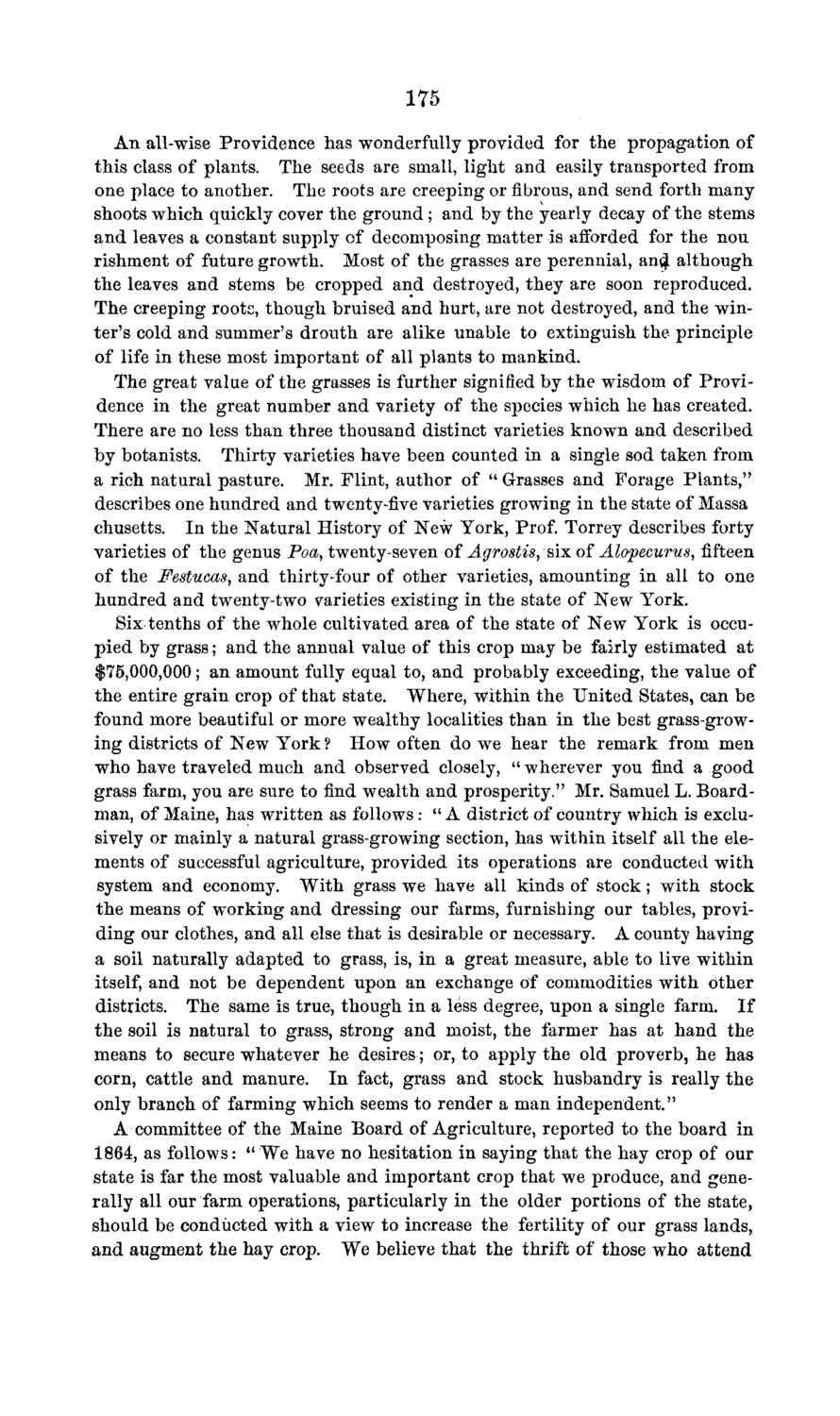| |
| |
Caption: Board of Trustees Minutes - 1869
This is a reduced-resolution page image for fast online browsing.

EXTRACTED TEXT FROM PAGE:
175 An all-wise Providence has wonderfully provided for the propagation of this class of plants. The seeds are small, light and easily transported from one place to another. The roots are creeping or fibrous, and send forth many shoots which quickly cover the g r o u n d ; and by the yearly decay of the stems a n d leaves a constant supply of decomposing matter is afforded for the nou rishment of future growth. Most of the grasses are perennial, an$ although the leaves and stems be cropped and destroyed, they are soon reproduced. The creeping roots, though bruised and hurt, are not destroyed, and the winter's cold and summer's drouth are alike unable to extinguish the principle of life in these most important of all plants to mankind. The great value of the grasses is further signified by t h e wisdom of Providence in the great number and variety of the species which he has created. There are no less than three thousand distinct varieties known and described by botanists. Thirty varieties have been counted in a single sod taken from a rich natural pasture. Mr. Flint, author of " Grasses and Forage Plants," describes one hundred and twenty-five varieties growing in the state of Massa chusetts. In the Natural History of New York, Prof. Torrey describes forty varieties of the genus Poa, twenty-seven of Agrostis, six of Alopecurus, fifteen of the Festucas, and thirty-four of other varieties, amounting in all to one hundred and twenty-two varieties existing in the state of New York. Six tenths of the whole cultivated area of the state of New York is occupied by grass; and the annual value of this crop may be fairly estimated at $75,000,000; an amount fully equal to, and probably exceeding, the value of the entire grain crop of that state. Where, within the United States, can be found more beautiful or more wealthy localities than in the best grass-growing districts of New York ? How often do we hear the remark from men who have traveled much and observed closely, " wherever you find a good grass farm, you are sure to find wealth and prosperity." Mr. Samuel L. Boardman, of Maine, has written as follows: " A district of country which is exclusively or mainly a natural grass-growing section, has within itself all the elements of successful agriculture, provided its operations are conducted with system and economy. W i t h grass we have all kinds of stock; with stock the means of working and dressing our farms, furnishing our tables, providing our clothes, and all else that is desirable or necessary. A county having a soil naturally adapted to grass, is, in a great measure, able to live within itself, and not be dependent upon an exchange of commodities with other districts. The same is true, though in a less degree, upon a single farm. If t h e soil is natural to grass, strong and moist, the farmer has at hand the means to secure whatever he desires; or, to apply the old proverb, he has corn, cattle and manure. I n fact, grass and stock husbandry is really the only branch of farming which seems to render a man independent." A committee of the Maine Board of Agriculture, reported to the board in 1864, as follows: " We have no hesitation in saying that the hay crop of our state is far the most valuable and important crop that we produce, and generally all our farm operations, particularly in t h e older portions of the state, should be conducted with a view to increase the fertility of our grass lands, and augment t h e hay crop. We believe that the thrift of those who attend
| |